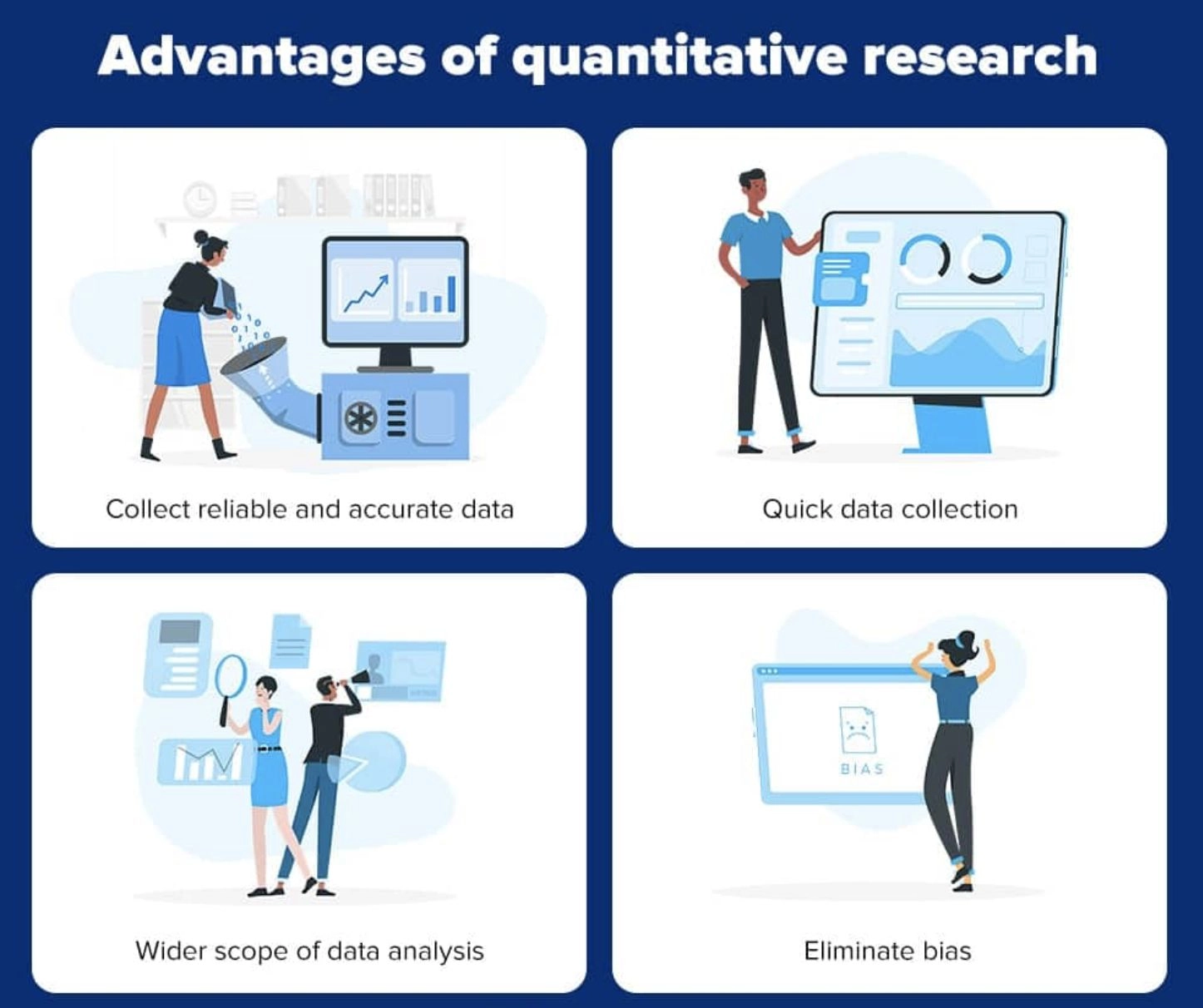Quantitative research is a complex process of numerical data collection and analysis. In the overwhelming majority of instances, it is the exact way to detect effective patterns, prove hypotheses, and test relationships between variables. The option is exceptionally popular in the social and natural sciences, such as marketing, economics, chemistry, psychology, and others.
If you have never used the quantitative research method in your study, you need to start with the basics. Take your time to analyze the definition of quantitative research and detect its peculiarities. For additional assistance in refining your written work, you might consider using a grade my paper free. If you're looking for guidance or support, services like PaperHelp essays can offer valuable insights and assistance.
What Is Quantitative Research?
The first thing students should deal with is the quantitative method definition, as it will reveal the most prominent features and peculiarities of the process. Quantitative research is a comprehensive process of numerical data collection and analysis that is aimed at the description, prediction, and control of specific variables. This is the exact research method used to make assumptions, generalize the outcomes of certain studies, and present accurate data. The most prominent steps on the way to flawless quantitative research include the theory, hypothesis, research design, data collection, data analysis, and result presentation.
Quantitative Research Methods
Once you are done with the quantitative research method definition, you are ready to proceed to analysis of the more specific aspects. What should you start with? From my personal experience, I can tell that students who have never used this type of research should start by reading a quantitative research paper example. Although the process may take some of your time, it will be exceptionally rewarding. Effective tips, powerful research instruments, and a plethora of other elements can be detected.
At this point, it is indispensable to mention two different types of quantitative research methods, including the primary and secondary.
Primary Quantitative Research Methods
This is the most common research method used by the vast majority of students and scholars to collect relevant information and find the most reasonable evidence. When it comes to the quantitative research method, there are multiple forms that can be used to achieve the desired results.
- Surveys. The fastest and the easiest research method helps to collect the necessary information in a matter of minutes. The undertaking can be of two different types, including longitudinal and cross-sectional.
- Descriptive research. The aim of the research method is to explain the current status of the measurable variables.
- Correlational research is used to set the relationship between the variables. With the help of statistical analysis, the impact of the elements on one another is set.
- Experimental research. It is the quantitative research method that focuses on the use of scientific and real-life experiments in order to determine the cause-effect connection between the variables.
- Causal-comparative research is associated with the cause-effect relationships between the dependent and independent variables.
When it comes to data collection, primary quantitative research is associated with sampling, interviews, observations, surveys, and similar options that guarantee up-to-date, meaningful, and reasonable information.
Secondary Quantitative Research Methods
When you know how to define quantitative research and understand the primary research methods, you are ready to proceed to the next stage, analyzing the secondary research methods. In the vast majority of instances, they presuppose conducting research using the already existing data. Unfortunately, there are numerous downsides to the method that make it less effective. At the same time, using this way, the student may save much time and effort searching for the necessary information.
The most common data sources for the secondary quantitative research method are the Internet, public libraries, commercial information sources, and educational institutions.
Key Characteristics of Quantitative Research
After you get the meaning of quantitative research and understand its prominence, you are ready to start using it in your custom projects. At the same time, it is critical to mention that the assignment can be a bit more complicated than it looks. Therefore, take your time to browse the Writingpapersucks.com page and find a chance to use free examples of quantitative research methods to improve your knowledge and add to your writing skills. Keep in mind that there is always an opportunity to get professional assistance from real experts, but if you are ready to accept the challenge and deal with the project independently, the below-mentioned specifications will help you. Focus on the basic peculiarities of the quantitative research method to thrive with the process.
- Large size of a sample. An opportunity to collect a large sample is associated with higher accuracy and reliable results. The results of the research can be generalized and applied to other parts of the population.
- Intuitive data collection methods. Controlled observations, questionnaires, and experiments are the exact methods used in quantitative research. Consequently, there is a limited number of risks related to the accuracy of the undertaking.
- Measurable variables. Using the research method, a student gets numeric data that is easy to analyze and explain. Moreover, taking advantage of measurable variables simplifies the process.
- Reliability. Due to the close-end questions used during the research, the respondents remained honest, contributing to the dependability of the research method.
- Reusable results. This is undeniably one of the most prominent features of the quantitative research method. The outcomes of the research can be replicated in other instances without any risks and pitfalls.
- Profound data analysis. The accuracy and flawless structure of the analysis keeps it trustworthy, meaningful, and reasonable. Additionally, it is inevitable to mention the accuracy of the process and the little effort it requires.
Advantages of Quantitative Research
What is quantitative research methods? It is a unique way to generalize the research findings and standardize the process of data collection. There is an array of benefits offered by the methods.

- Replication of the study is made possible with the help of the standardized process and reasonable definitions of complex concepts.
- There is always a chance to reproduce the study using different participants, settings, or time.
- This method can be applied to process and analyze large samples.
- The research method is rational and scientific, which means the information received during the process is reasonable and objective.
- The process is quite easy as mainly the numeric data is used.
- A hypothesis testing and validation are possible using the quantitative research method.
- The research method is based on facts, values, and other concepts that can be easily replicated or checked.
Downsides of Quantitative Research
Irrespective of all the advantages of the quantitative research specified above, it is indispensable to mention the disadvantages that can affect the quality of the analysis and its specifications. First of all, it is indispensable to emphasize that even though the types of quantitative research methodologies used in certain instances may vary, the risks remain the same.
- The use of restrictive definitions can invert the meaning and prominence of complex concepts.
- Taking into account only predetermined measurements and variables, you ignore other observations that can be extremely important for the research.
- Structural bias such as missing data, inappropriate sampling methods, and vague measurements can influence the quantitative research.
- Different types of quantitative research methods can be misused because of the wrong context they are used in. An unnatural setting is one of the most devastating elements that can lead to intentional or unintentional result manipulations.
- The participants are supposed to give objective answers without any explanations.




